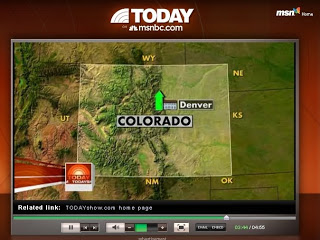Click
here for full report.
Completed foreclosures fall 26 percent
Completed foreclosures continued a downward slide in Colorado as first quarter totals for completed foreclosures fell 26 percent below last year’s totals. According to a report released Monday by the Department of Local Affairs’ Division of Housing, there were 4,354 completed foreclosures during the first quarter of 2009, falling from a total of 5,899 for the same period last year.
Quarterly totals of completed foreclosures fell for the third time in three quarters as completed foreclosures fell 14 percent from the fourth quarter of 2008 to the first quarter of 2009.
New foreclosure filings which begin the foreclosure process, on the other hand, increased for the third time in three quarters as foreclosure filings climbed 13 percent to 10,745 from the fourth quarter’s total of 9,481.
Comparing year-over-year however, new filings were down, and fell 8 percent from 2008’s first quarter total of 11,634.
The first quarter’s declines mark the largest year-over-year decreases in completed foreclosures since the Division of Housing began collecting data in 2006.
The statewide declines in foreclosure activity were driven by sharp drops in foreclosures in Adams, Arapahoe, Denver and Weld Counties, continuing a trend that began in 2008. In 2006 and 2007, Adams, Denver, Arapahoe, and Weld counties were the hardest hit counties, but totals in completed foreclosures in Adams, Arapahoe and Denver began to decline significantly by the middle of 2008. By the end of 2008, Weld County began to experience falling totals as well.
Compared year over year, completed foreclosures dropped 33 percent in Adams County, 37 percent in Arapahoe County and 48 percent in Denver County. In Weld County, completed foreclosures fell by 21 percent.
For the second quarter in a row, El Paso County was the one metropolitan Front Range county that reported growth in both foreclosure filings and completed foreclosures. Completed foreclosures increased 3 percent year-over-year, and foreclosure filings increased 6 percent during the same period.
“We continue to be cautiously optimistic,” said Kathi Williams, Director of the Division of Housing. “Unemployment continues to be a concern as do future resets on adjustable rate mortgages. Of course, other states have these same dynamics, but their foreclosure rates are going up while ours are stabilizing. That’s a good sign for us.”
Observers note that there may be several reasons for the drop in the rate of growth in foreclosure filings. The Colorado Foreclosure Hotline (1-877-601-HOPE) has been in place for over two years now, and according to Hotline records, almost 10,000 households have been able to avoid foreclosure through the Hotline since it was launched in 2006.
Mortgage lenders have also been much slower in foreclosing on properties in recent months than in the past. Lenders have devoted more staff to working with borrowers in modifying mortgages or putting in place repayment plans.
However, even as growth rates moderate in many areas, foreclosure rates remain at historic highs. All types of foreclosure activity have more than doubled since 2004 when there were only 16,801 foreclosure filings and 7,782 completed foreclosures.
The highest rate in a metropolitan county was found in Adams County where there was 1 foreclosure for every 238 households. In Weld County, there was 1 filing for every 245 households, and 1 for every 352 households in Denver County.
The latest data reinforces past claims that high foreclosure rates are somewhat restricted to the Front Range and eastern Colorado. Counties in western Colorado experienced much lower foreclosure rates. Mesa County reported 1 foreclosure filing for every 1,260 households, and La Plata County reported 1 for every 944 households. Garfield County reported 1 for every 6,772 households.
The Colorado Division of Housing is a division of the Colorado Department of Local Affairs and collects foreclosure data from Public Trustees on a quarterly basis. The report, and past foreclosure reports, can be accessed online at the Colorado Division of Housing Web Site at http://dola.colorado.gov/cdh/.
